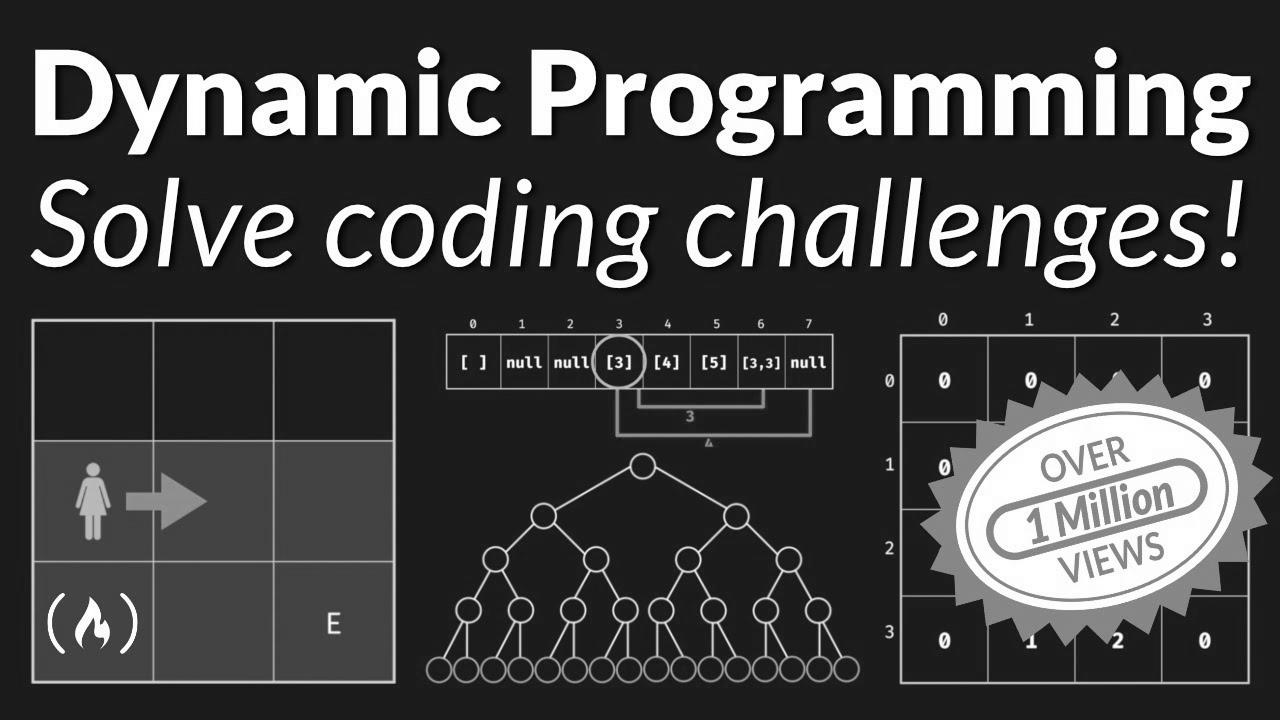Dynamic Programming – Learn to Solve Algorithmic Problems & Coding Challenges
Warning: Undefined variable $post_id in /home/webpages/lima-city/booktips/wordpress_de-2022-03-17-33f52d/wp-content/themes/fast-press/single.php on line 26

Study , Dynamic Programming - Be taught to Clear up Algorithmic Issues & Coding Challenges , , oBt53YbR9Kk , https://www.youtube.com/watch?v=oBt53YbR9Kk , https://i.ytimg.com/vi/oBt53YbR9Kk/hqdefault.jpg , 2309657 , 5.00 , Discover ways to use Dynamic Programming in this course for novices. It can provide help to remedy advanced programming problems, such ... , 1607007022 , 2020-12-03 15:50:22 , 05:10:02 , UC8butISFwT-Wl7EV0hUK0BQ , freeCodeCamp.org , 75276 , , [vid_tags] , https://www.youtubepp.com/watch?v=oBt53YbR9Kk , [ad_2] , [ad_1] , https://www.youtube.com/watch?v=oBt53YbR9Kk, #Dynamic #Programming #Learn #Remedy #Algorithmic #Problems #Coding #Challenges [publish_date]
#Dynamic #Programming #Be taught #Remedy #Algorithmic #Issues #Coding #Challenges
Learn how to use Dynamic Programming on this course for newbies. It will probably make it easier to remedy complicated programming problems, such ...
Quelle: [source_domain]
- Mehr zu learn Encyclopaedism is the physical entity of getting new reason, knowledge, behaviors, trade, belief, attitudes, and preferences.[1] The ability to learn is demoniacal by mankind, animals, and some equipment; there is also testify for some kinda encyclopedism in certain plants.[2] Some encyclopedism is immediate, induced by a single event (e.g. being burned-over by a hot stove), but much skill and knowledge lay in from recurrent experiences.[3] The changes elicited by learning often last a lifetime, and it is hard to identify learned material that seems to be "lost" from that which cannot be retrieved.[4] Human eruditeness starts at birth (it might even start before[5] in terms of an embryo's need for both interaction with, and immunity inside its situation within the womb.[6]) and continues until death as a result of on-going interactions 'tween folk and their state of affairs. The creation and processes active in eruditeness are deliberate in many established comedian (including learning psychological science, neuropsychology, psychonomics, cognitive sciences, and pedagogy), besides as rising w. C. Fields of noesis (e.g. with a distributed interest in the topic of learning from guard events such as incidents/accidents,[7] or in cooperative eruditeness eudaimonia systems[8]). Look into in such william Claude Dukenfield has led to the designation of diverse sorts of encyclopedism. For case, learning may occur as a event of physiological condition, or classical conditioning, operant conditioning or as a outcome of more complicated activities such as play, seen only in comparatively rational animals.[9][10] Encyclopaedism may occur consciously or without conscious knowingness. Learning that an aversive event can't be avoided or at large may consequence in a shape called enlightened helplessness.[11] There is evidence for human behavioural learning prenatally, in which dependency has been determined as early as 32 weeks into gestation, indicating that the central anxious organization is sufficiently formed and primed for learning and faculty to occur very early on in development.[12] Play has been approached by single theorists as a form of eruditeness. Children scientific research with the world, learn the rules, and learn to act through play. Lev Vygotsky agrees that play is pivotal for children's maturation, since they make substance of their environs through playing instructive games. For Vygotsky, nonetheless, play is the first form of learning word and communication, and the stage where a child started to understand rules and symbols.[13] This has led to a view that encyclopaedism in organisms is forever related to semiosis,[14] and often related to with figural systems/activity.
In canSum memoization around 1:21:30… array numbers are said to be non negative. say the first element of the array is zero , then cansum() will go in infinite loop…right ?
3:52:52 the space is actually the size of the largest value in the numbers array, (due to growing the array to i + num) which could be way larger than the target value (unless I am misunderstanding and the array becomes sparsely represented for a huge index so not memory hungry)
Thank you so much!
"potentpot" hmmm
F' I am so stupid 🙁 my brain hurts. PLZ do this in c++
Amazing, simply amazing!
Can you please try and solve the "skateboard" example for canConstruct with the tabulation strategy. It doesn't look possible to solve it with tabulation strategy discussed here.
7:38
The best explanation I've ever had! Thanks
This is one of the best videos that explain DP very well.
Finally done!!!! 🎆
32:00
1:10:28
AMAZING course! Thanks Alvin.
A quick question please – is it me or does the canSum function fail when you pass in 0 as the target? It returns true irrespective of the array of numbers.
So I watched this, I agree it's very good for what it is . The examples are contrived to hammer home similar points. My question: how do these same exact problems change when you do NOT allow choosing the same elements repeatedly in the sets, and those sets are much, much larger?
Nothing can be as useful as this video on YT.
Thanks!
This is a great tutorial, thank you Alvin.
Just and advice for new comers, don't try so hard the tabulation part, it's not intuitive, the algorithms used overther are not generalistics and there is not any recipe that works totally for them (contrary to memorization) , there are enormous jumps on the logic, and it's ok no worries, with memorization part it's enoght to pass the problems. Success!
You lost me at 1/2 simplifies to 1
i just want to thank you n^m times🙏🙏🙏🙏🙏🙏🙏🙏🙏
This is an amazing course! Thank you for sharing this with us! Just curious, is there any way we can have access to the illustrations? They are also amazing and would be great to keep in some notes. Thank you!
Just completed the course and this is awesome! Thank you so much!!!
How CanSum(7,[2,3]) will return true it should be false can someone please explain me.